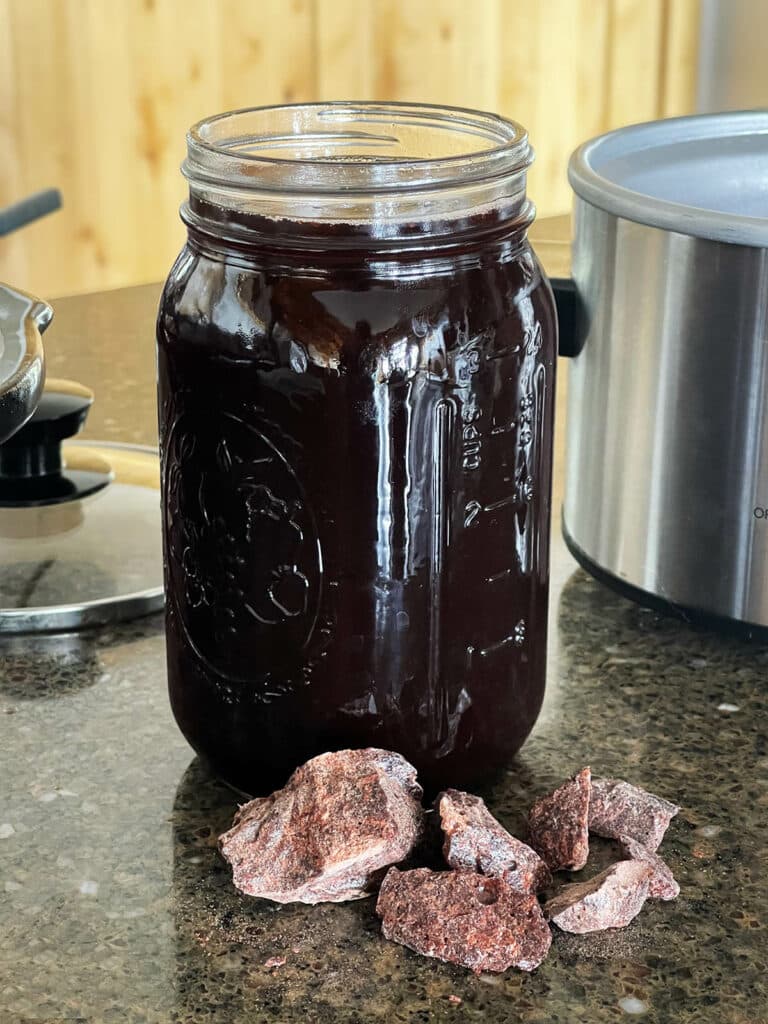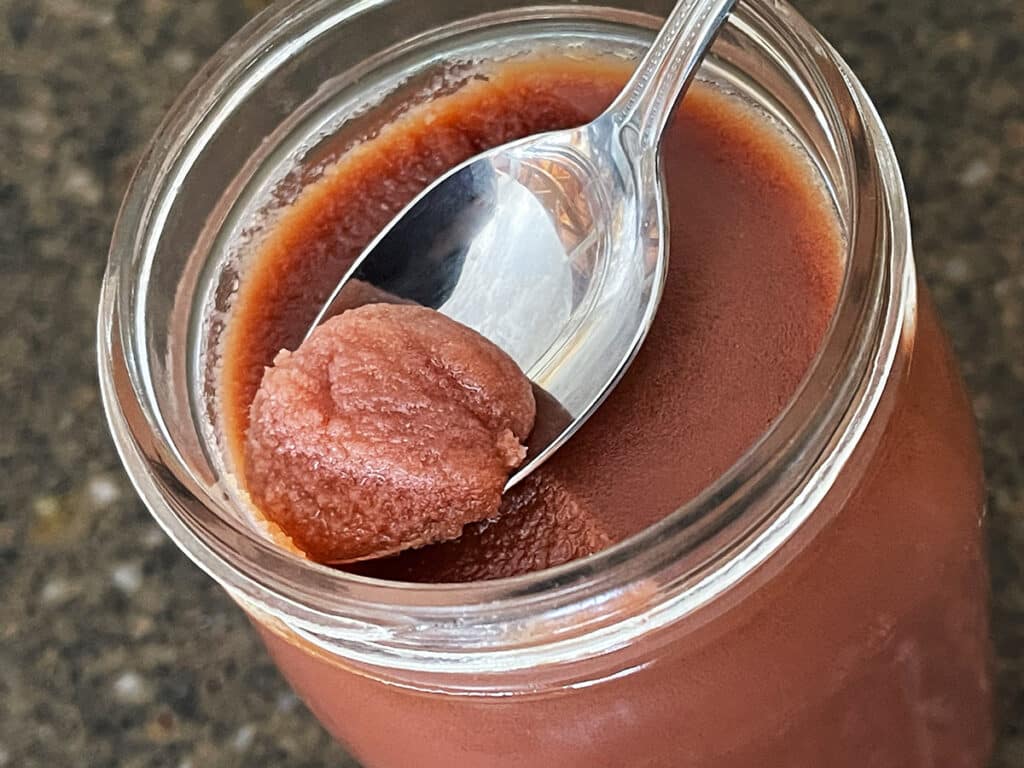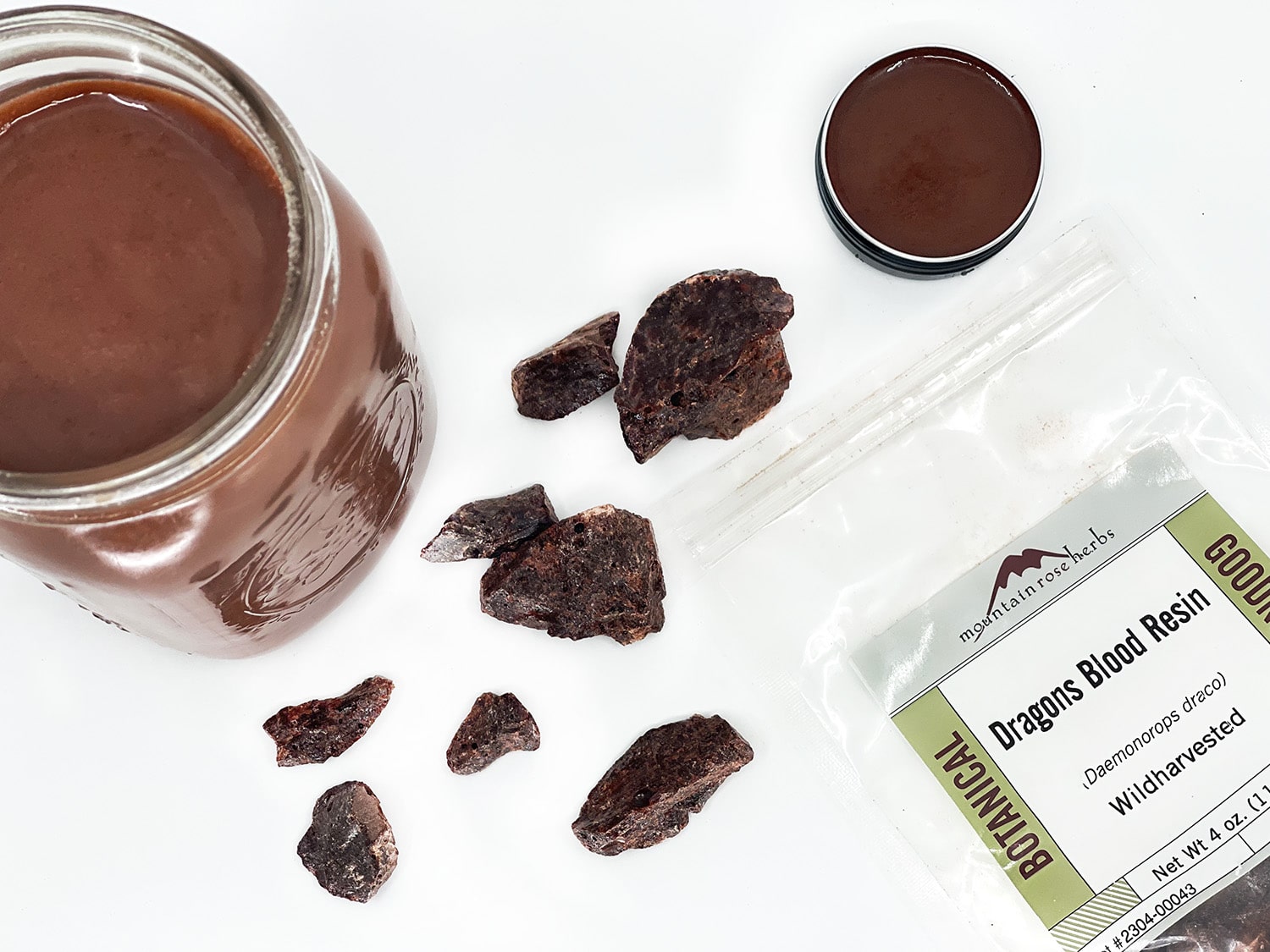Dabbling with… what?
Let me back up.
I recently completed the Tisserand Institute’s Essential Oil Safety Masterclass and Essential Oils for Healthy Skin courses taught by Robert “The Man” Tisserand, author of the quintessential text Essential Oil Safety: A Guide for Health Care Professionals. If you’re interested in a thorough immersion into the world of volatile oil phytochemistry, I can’t recommend these classes (or really, anything taught by Robert) highly enough.
During a lesson on trauma, wounds and repair, Robert mentioned that dragon’s blood resin may be used in skincare formulations at 3% to improve skin elasticity. He was referencing a small in vivo study entitled “Improvement of skin condition in striae distensae: Development, characterization and clinical efficacy of a cosmetic product containing Punica granatum seed oil and Croton lechleri resin extract.” in which an oil-in-water cream containing 3% dragon’s blood resin extract from Croton lecheri and 4% pomegranate seed oil significantly improved dermis (skin) thickness, hydration and elasticity values in the skin of 20 volunteers.
This got my attention. I’d seen the provocatively named dragon’s blood resin sold on the Mountain Rose Herbs and Starwest Botanicals, but had never thought much about how it might be used in skincare, since it seemed primarily to be a resin used for incense and spiritual rituals.
I’m so happy Robert inspired me to look into it further!
Dragon’s blood is a plant resin that has been used for various purposes — including skincare — for centuries. The study Robert cited used dragon’s blood resin from Croton lecheri, however, the variety of resin you’re going to find sold most often is from Daemonorops draco.
A quick history
Dragon’s blood resin was used in Traditional Chinese Medicine (TCM) as far back as the Han Dynasty (206 BCE – 220 CE). It was employed for its medicinal properties, including wound healing, as an astringent, and to treat various ailments.
It’s been found in the archaeological remains of ancient Egyptian cosmetics. It was used to create red pigments for makeup and adornment.
In Ayurvedic medicine, dragon’s blood was used for its astringent and anti-inflammatory properties. Ancient texts like the Charaka Samhita mention its use in various formulations.
Greek and Roman scholars and physicians, including Dioscorides and Pliny the Elder, documented the use of dragon’s blood as a medicinal substance. They believed it had healing properties and used it to treat wounds, diarrhea, and other health issues.
Indigenous tribes in Africa, particularly in regions where dragon’s blood trees grow, have a long history of using the resin for various purposes, including wound healing, as a dye, and in traditional rituals.
The ancient Mayan and Aztec civilizations of Central America used dragon’s blood resin as incense in religious ceremonies. It was also used as a pigment for painting and pottery.
Will the real dragon's blood please stand up?
As I quickly discovered, researching the properties and uses for dragon’s blood can be pretty darn confusing, since a crimson resin bearing the name “dragon’s blood” is harvested from not one, not two but a whole group of completely unrelated plants spanning several generas.
Sources of dragon’s blood include Dracaena cinnabari of the island of Socotra in the Republic of Yemen; Calamus draco from Thailand; Dracaena draco from the Canary Islands; Pterocarpus spp. from Mexico, Central and South America; Croton draco from Mexico; Croton lechleri from Peru and Ecuador; and Daemonorops draco, native to Southeast Asia.
Fortunately, there’s a fair amount of overlap in the constituents and, hence, medicinal properties of these different resins…
Resin from Daemonorops draco and other related plants possess a number of common constituents which contribute to its healing properties. While the exact chemical composition will vary depending on the species and environmental conditions, some of the key compounds found in various species of dragon’s blood resin include:
Proanthocyanidins are powerful antioxidants with anti-inflammatory properties that protect the skin from oxidative stress.
Polyphenolic compounds in Daemonorops draco like dracoresinotannol scavenge and neutralize free radicals and reduce oxidative stress by suppressing inflammatory pathways — all important for efficient wound healing and tissue repair.
Proanthocyanidins can also help protect collagen and elastin fibers in the skin from degradation due to oxidative stress. By preserving these structural proteins, proanthocyanidins may contribute to the maintenance of skin elasticity.
Certain diterpenes found in Daemonorops draco resin may have antimicrobial and anti-inflammatory properties. This can make the resin effective in preventing infection when applied topically to wounds and cuts. They also mitigate inflammation by interfering with the production of inflammatory cytokines and enzymes.
Dracorhodin is a diterpene pigment found in Daemonorops draco that contributes to the resin's red color. It's also been studied for its potential antioxidant and anti-inflammatory properties. Dracorubin is another red pigment diterpene found in Daemonorops draco resin.
Daemonorops draco resin contains the diterpene alkaloid taspine, which is believed to contribute to its wound-healing properties. These alkaloids help modulate immune response and reduce inflammation. Taspine, specifically, is thought to help stimulate tissue regeneration and cell proliferation, aiding in the repair of damaged skin, which can contribute to smoother and more youthful-looking skin.
Phenolic compounds such as benzoic acid in Daemonorops draco resin have been associated with its antioxidant, antimicrobial and anti-inflammatory properties. These compounds modulate the body's immune response and reduce the production of pro-inflammatory substances, as well as reduce the risk of infection and soothe irritated skin. These compounds can help reduce oxidative stress, inflammation, and cellular damage, which are factors that can affect skin aging and its ability to regenerate.
A number of pigments found in Daemonorops draco resin contribute to the its characteristic red coloration.
Dracocarmin is one of the primary pigments responsible for the red color of dragon's blood resin. Nordracorhodin is another. Both are diterpene pigments with complex chemical structures that are not only responsible for the resin's rich color but also play a role in protecting the plant from environmental stressors and potential pathogens.
In traditional and cultural practices, dragon's blood resin has been valued for its vibrant red color and has been used for a wide range of applications, including dyes, art, cosmetics and rituals.
Resin acids have been studied for their anti-inflammatory and antimicrobial properties. They can help inhibit the growth of bacteria, fungi and other microorganisms, which is particularly relevant in wound care to prevent infections.
Resin acids in Daemonorops draco, including abietic acid, pimaric acid and sandaracopimaric acid, may support wound healing by forming a protective barrier over wounds, which can aid in the healing process and reduce the risk of infection, while contributing to overall skin health.
Flavonoids are another group of antioxidants that can help protect the skin from damage and inflammation by inhibiting the release of inflammatory mediators and reducing the activity of enzymes that promote inflammation.
Flavonoids in Daemonorops draco may also assist in collagen production, which is essential for skin repair and elasticity. Collagen is a vital protein for skin structure and elasticity, and increasing its production can help reduce the appearance of fine lines and wrinkles.
Dragon's blood in skincare
Dragon’s blood has quite a lot to contribute to the world of skincare formulations!
An oleogel preparation could harness dragon’s blood’s anti-inflammatory compounds to help to reduce redness, swelling and irritation associated with skin conditions such as eczema, psoriasis, rosacea and rashes.
Thanks to its natural antiseptic and wound-healing properties, a salve incorporating dragon’s blood resin could be used topically to help treat minor cuts, abrasions and insect bites. The resin forms a protective barrier that can aid in the healing process.
For acne sufferers, dragon’s blood’s antimicrobial properties might be useful incorporated into a clay-based facial mask to help prevent the growth of acne-causing bacteria and soothe inflamed skin.
The resin’s antioxidant qualities may help protect the skin from environmental stressors like pollution and UV radiation. It has been studied as an adjunct to sunscreen to provide an extra layer of protection.
Skincare products including dragon’s blood may stimulate collagen production, which, of course, is essential for maintaining skin elasticity and reducing the appearance of fine lines and wrinkles. Skincare products containing dragon’s blood are said to have skin-brightening effects, as well as the ability to improve uneven skin tone and hyperpigmentation, which is certainly plausible given its cell proliferation actions.
Naturally, I chose to infuse my dragon’s blood resin in tallow. (See here for why I favor tallow in skincare and check out Making Herbal Oil Infusions for a refresher on ways to do a hot oil maceration.)
I have big plans to include my dragon blood-tallow in a future variation of my Healthy Aging serum and possibly in an oleogel facial mask.
And maybe in a concentrated wound salve in conjunction with other tissue granulating herbs…

I’m also very curious about dragon blood’s potential as a natural lip colorant. While admiring the lovely rosy-brown color of my tallow + dragon’s blood infusion, it hit me that it was very close to the same color as my favorite lipstick…
Oh yesssssss.
The oil-soluble resin has been used for centuries as a natural textile dye, a red varnish for wooden furniture and lacquer for 18th century Italian violins as well as an ink for use in art and calligraphy. It’s staining power is well documented.
Why not use a more concentrated version on lips?
Stay tuned.





3 Responses
Hello, do you have any updates on this please? I am contemplating making a dragons blood tallow and came across your post. I have some powdered which I’m planning to use.
Hi Kelly, I have not yet made the lip product I was thinking about, but the straight dragon’s blood tallow has gotten quite a bit of use since I made it. I keep a small jar in the medicine cabinet for cuts, bites and rashes (it definitely seems to speed up healing!) and I’ve been using it straight on my (damp) face after washing. I really like it! Makes my skin feels so nice. Highly recommend you give dragon’s blood tallow a try! ♥
Lovely, thank you. I’m really looking forward to trying the dragons blood. I haven’t got round to making anything with it yet. I love it as incense, it smells lovely.